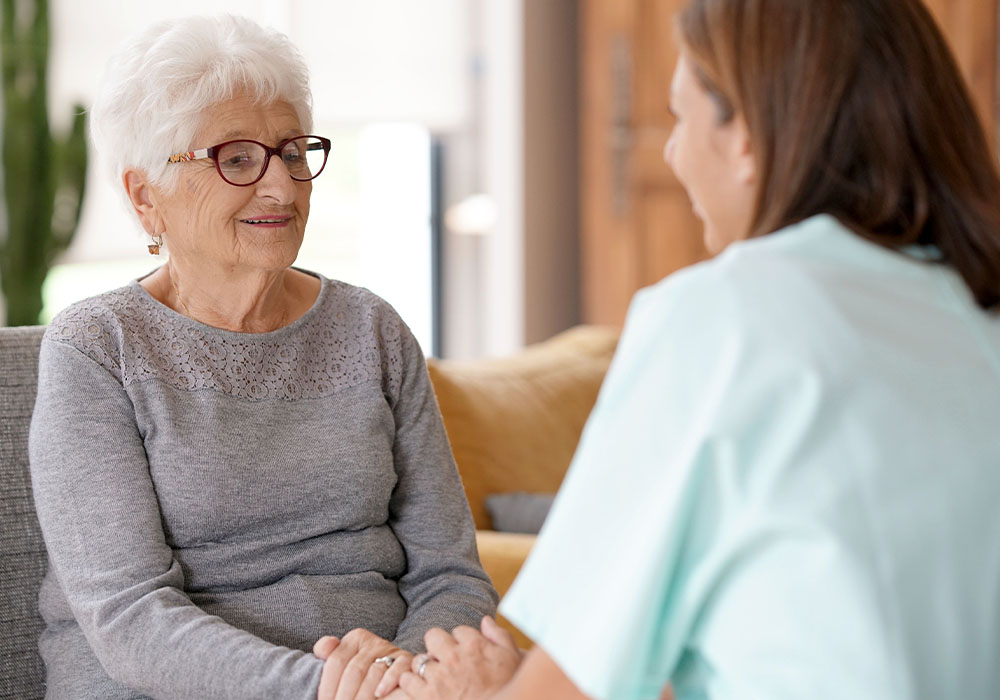The routine question “How are you feeling today?” often receives an equally routine response: “Fine.” However, what remains unsaid can significantly impact care quality and outcomes. Effective Caregiver communication requires going beyond surface-level exchanges to build trust and uncover the genuine needs of those in your care.
The Power of Meaningful Caregiver Communication
Deeper communication directly correlates with improved health outcomes, increased medication adherence, and greater care satisfaction. When Caregivers master thoughtful communication techniques, they create safe spaces for Clients to express concerns they might otherwise keep hidden—from physical discomfort to emotional struggles or concerns about losing independence.
These conversations aren’t merely pleasant exchanges; they’re vital assessment tools that inform better care decisions and foster genuine human connection. Caring relationships built on trust and mutual understanding foster security, address needs, reduce Caregiver stress, and enhance the quality of life for both parties.
Setting the Stage for Openness
When it comes to meaningful communication, when and where a conversation happens matters just as much as what is said. Avoid rushing important conversations during busy transitions like getting dressed or taking medication. Instead, create moments of calm—over tea, during a walk, or while folding laundry together—where the Client feels relaxed and unrushed. These environments often lead to more genuine, open dialogue.
Caregivers should also give space for silence. Seniors may need a moment to gather their thoughts, and jumping in too quickly can unintentionally shut down what might have been a more vulnerable share.
Questions That Invite Expression
The phrasing of questions dramatically affects the responses they generate. Instead of “Did you sleep well?” which invites a simple yes or no, try “Tell me about how you slept last night.” This open-ended approach encourages descriptive responses that reveal important details.
Other powerful conversation-starters include:
- “What’s been on your mind lately?”
- “I notice you seem quieter today—I’m here to listen if you’d like to talk.”
- “What would make today feel like a good day for you?”
- “What do you wish people understood about what you’re experiencing?”
These invitations demonstrate genuine interest and create space for authentic sharing that might not emerge through standard check-ins.
Hearing What Isn’t Said
Strong Caregiver communication isn’t just about what’s spoken—it’s about what’s noticed. Changes in tone, facial expression, grooming habits, or appetite can signal needs the Client hasn’t vocalized yet.
Our Caregivers often develop a mental checklist: Is the Client more withdrawn today? Are they moving more slowly or skipping activities they usually enjoy? Is their posture different? Noticing these nonverbal cues (and approaching with gentle curiosity) can lead to better conversations: “I noticed you’re moving a little more carefully today. Is anything feeling tight or sore?”
By validating what they observe and inviting dialogue, Caregivers empower Clients to speak up more freely, especially about issues they may be unsure how to articulate.
Being Fully Present
Perhaps the most undervalued communication technique is simply being fully present. In our busy, task-oriented Caregiving environments, the gift of undivided attention has become increasingly rare and precious.
Practice intentional listening by putting aside distractions, maintaining comfortable eye contact, and using supportive body language. Resist the urge to problem-solve immediately, which can shut down further sharing. Instead, validate feelings with responses like “That sounds difficult” or “I can understand why you’d feel that way.”
It can be helpful to remember that seniors and those with disabilities often experience a shrinking social world. Your genuine interest and attention may represent a significant portion of their meaningful human interaction.
Building Trust Through Consistency
At the Caring for Family of Companies, we believe that the most powerful tool any Caregiver has isn’t found in a medical bag; it’s in how they connect. With thoughtful observation, better timing, and more intentional language, Caregivers can turn daily check-ins into life-changing conversations.
The resulting connections transform what might otherwise be routine Caregiving into a meaningful human engagement that enriches both lives.

